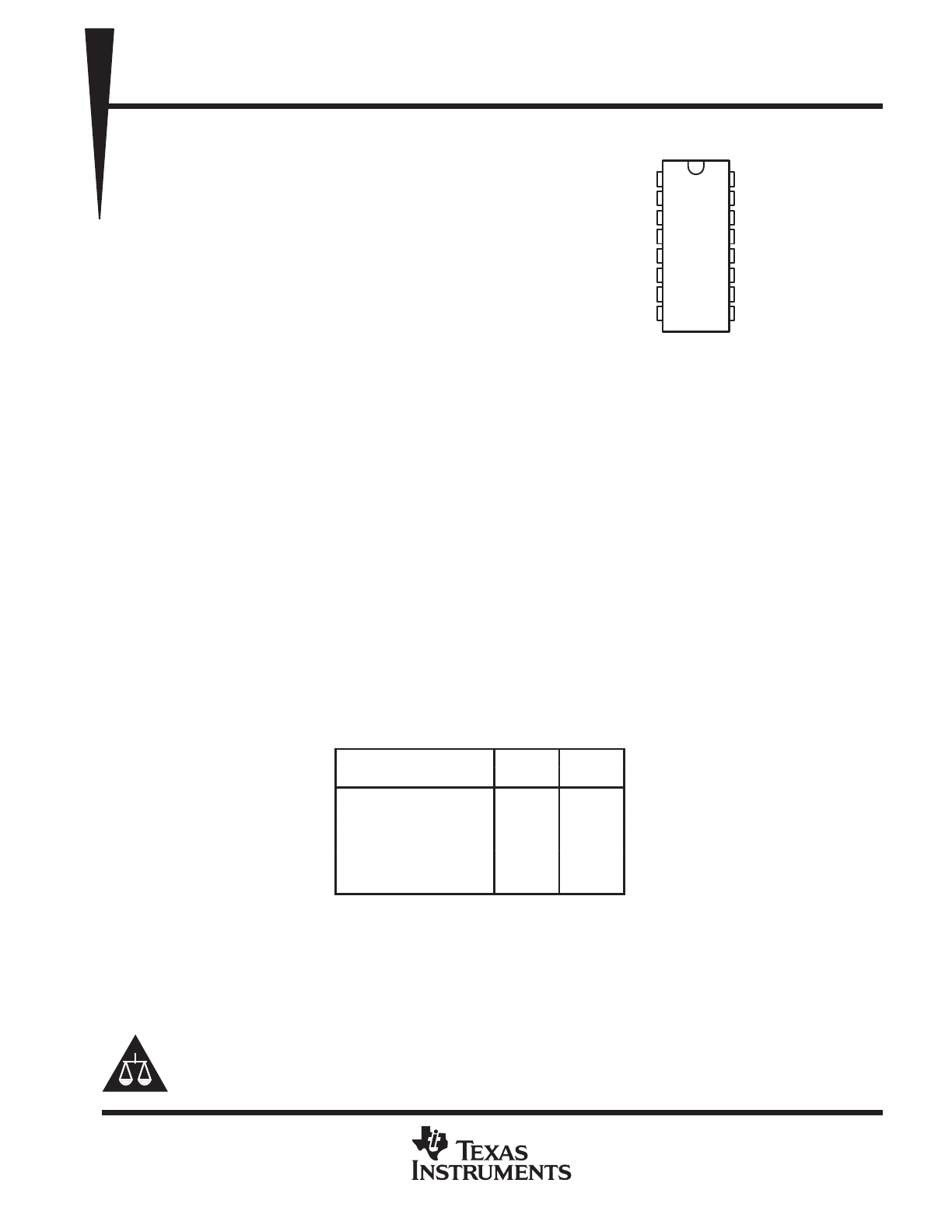
SN65175, SN75175
QUADRUPLE DIFFERENTIAL LINE RECEIVERS
SLLS145B – OCTOBER 1990 – REVISED MAY 1995
1
POST OFFICE BOX 655303
•
DALLAS, TEXAS 75265
D
Meet or Exceed the Requirements of ANSI
Standard EIA/TIA-422-B, RS-423-B, and
RS-485
D
Meet ITU Recommendations V.10, V.11,
X.26, and X.27
D
Designed for Multipoint Bus Transmission
on Long Bus Lines in Noisy Environments
D
3-State Outputs
D
Common-Mode Input Voltage Range
– 12 V to 12 V
D
Input Sensitivity . . .
±
200 mV
D
Input Hysteresis . . . 50 mV Typ
D
High Input Impedance . . . 12 k
Ω
Min
D
Operate From Single 5-V Supply
D
Low-Power Requirements
D
Plug-In Replacement for MC3486
description
The SN65175 and SN75175 are monolithic quadruple differential line receivers with 3-state outputs. They are
designed to meet the requirements of ANSI Standards EIA/TIA-422-B, RS-423-B, and RS-485, and several ITU
recommendations. These standards are for balanced multipoint bus transmission at rates up to 10 megabits
per second. Each of the two pairs of receivers has a common active-high enable.
The receivers feature high input impedance, input hysteresis for increased noise immunity, and input sensitivity
of
±
200 mV over a common-mode input voltage range of
±
12 V. The SN65175 and SN75175 are designed for
optimum performance when used with the SN75172 or SN75174 quadruple differential line drivers.
The SN65175 is characterized for operation from – 40
°
C to 85
°
C. The SN75175 is characterized for operation
from 0
°
C to 70
°
C.
FUNCTION TABLE
(each receiver)
DIFFERENTIAL
ENABLE
OUTPUT
A – B
ENABLE
Y
VID
≥
0.2 V
H
H
– 0.2 V < VID < 0.2 V
H
?
VID
≥
– 0.2 V
H
L
X
L
Z
Open circuit
H
?
H = high level, L = low level, ? = indeterminate,
X = irrelevant, Z = high impedance (off)
Copyright
1995, Texas Instruments Incorporated
PRODUCTION DATA information is current as of publication date.
Products conform to specifications per the terms of Texas Instruments
standard warranty. Production processing does not necessarily include
testing of all parameters.
Please be aware that an important notice concerning availability, standard warranty, and use in critical applications of
Texas Instruments semiconductor products and disclaimers thereto appears at the end of this data sheet.
1
2
3
4
5
6
7
8
16
15
14
13
12
11
10
9
1B
1A
1Y
1, 2EN
2Y
2A
2B
GND
V
CC
4B
4A
4Y
3, 4EN
3Y
3A
3B
D OR N PACKAGE
(TOP VIEW)
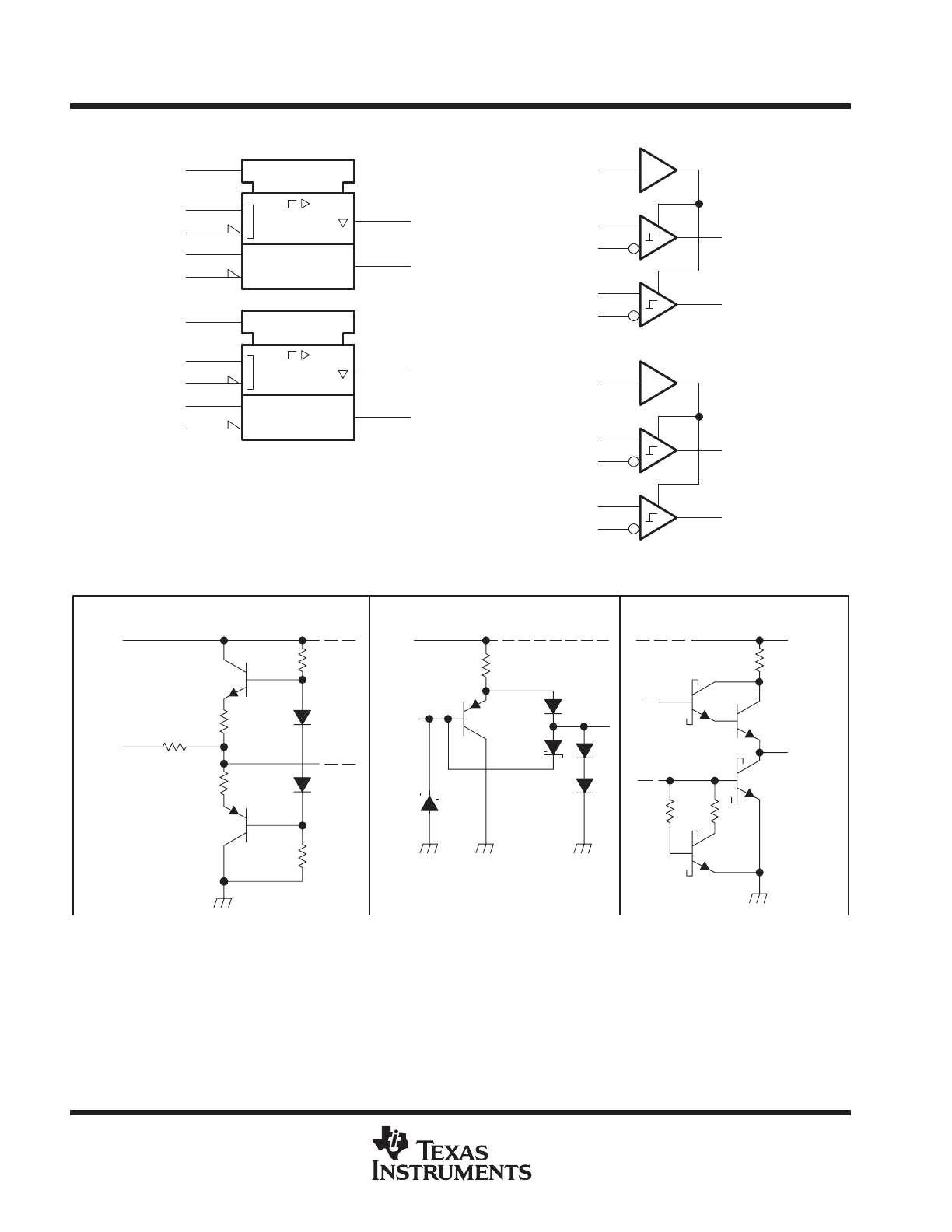
SN65175, SN75175
QUADRUPLE DIFFERENTIAL LINE RECEIVERS
SLLS145B – OCTOBER 1990 – REVISED MAY 1995
2
POST OFFICE BOX 655303
•
DALLAS, TEXAS 75265
logic symbol
†
4Y
3Y
2Y
1Y
4B
4A
3B
3A
3, 4EN
2B
2A
1B
1A
1, 2EN
13
11
5
3
15
14
9
10
12
7
6
1
2
4
EN
EN
† This symbol is in accordance with ANSI/IEEE Std 91-1984 and
IEC Publication 617-12.
logic diagram (positive logic)
2B
2A
1B
1A
1, 2EN
2Y
1Y
3
5
4B
4A
3B
3A
3, 4EN
13
11
3Y
4Y
15
14
9
10
12
7
6
1
2
4
schematics of inputs and outputs
TYPICAL OF ALL OUTPUTS
EQUIVALENT OF EACH ENABLE INPUT
EQUIVALENT OF EACH A OR B INPUT
Output
VCC
Input
VCC
VCC
Input
16.8 k
Ω
NOM
960
Ω
NOM
8.3 k
Ω
NOM
85
Ω
NOM
960
Ω
NOM
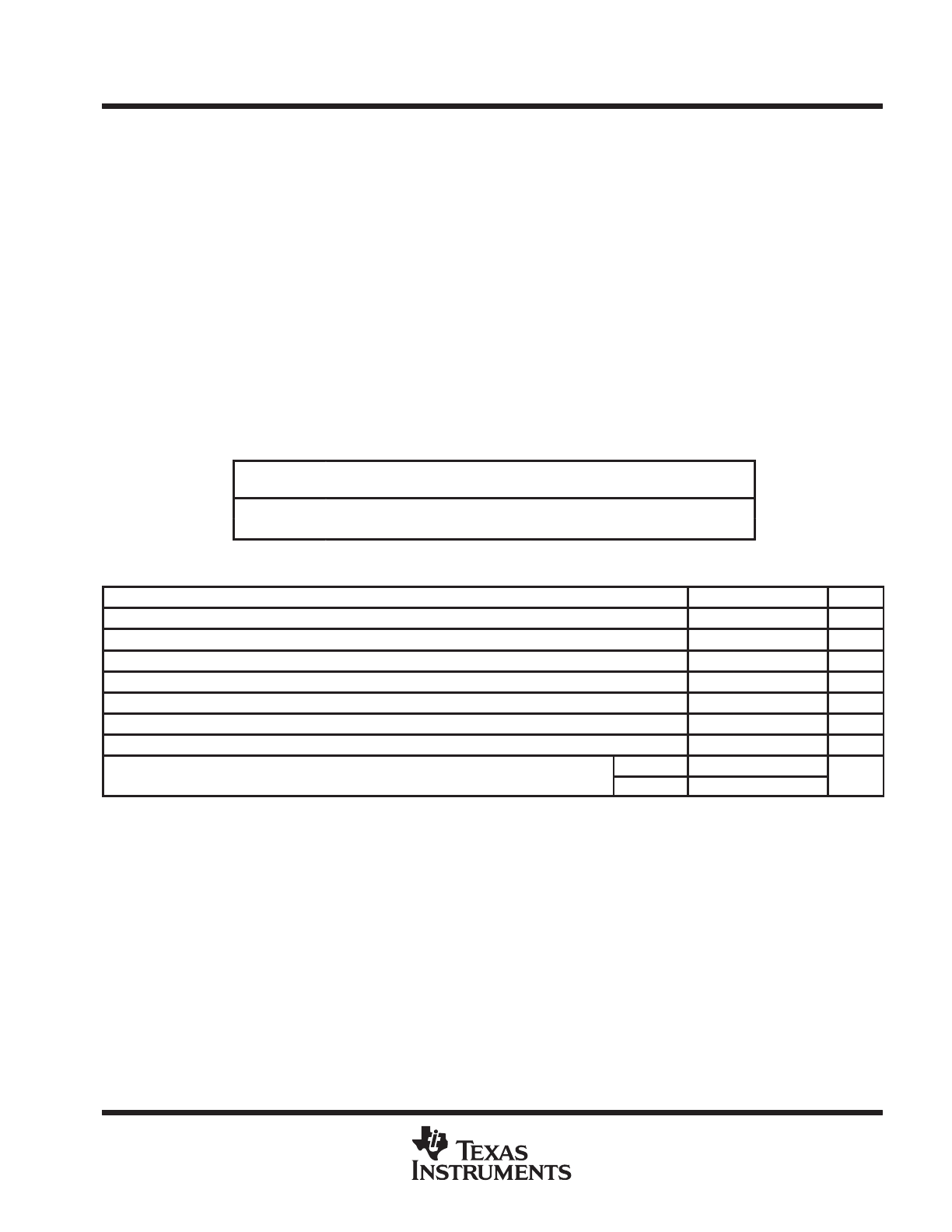
SN65175, SN75175
QUADRUPLE DIFFERENTIAL LINE RECEIVERS
SLLS145B – OCTOBER 1990 – REVISED MAY 1995
3
POST OFFICE BOX 655303
•
DALLAS, TEXAS 75265
absolute maximum ratings over operating free-air temperature range (unless otherwise noted)
†
Supply voltage, V
CC
(see Note 1)
7 V
. . . . . . . . . . . . . . . . . . . . . . . . . . . . . . . . . . . . . . . . . . . . . . . . . . . . . . . . . . . . .
Input voltage V
I
, (A or B inputs)
±
25 V
. . . . . . . . . . . . . . . . . . . . . . . . . . . . . . . . . . . . . . . . . . . . . . . . . . . . . . . . . . . . .
Differential input voltage, V
ID
(see Note 2)
±
25 V
. . . . . . . . . . . . . . . . . . . . . . . . . . . . . . . . . . . . . . . . . . . . . . . . . . .
Enable input voltage, V
I
, EN
7 V
. . . . . . . . . . . . . . . . . . . . . . . . . . . . . . . . . . . . . . . . . . . . . . . . . . . . . . . . . . . . . . . . . .
Low-level output current, I
OL
50
mA
. . . . . . . . . . . . . . . . . . . . . . . . . . . . . . . . . . . . . . . . . . . . . . . . . . . . . . . . . . . . . .
Continuous total dissipation
See Dissipation Rating Table
. . . . . . . . . . . . . . . . . . . . . . . . . . . . . . . . . . . . . . . . . . .
Operating free-air temperature range, T
A:
SN65175 – 40
°
C to 85
°
C
. . . . . . . . . . . . . . . . . . . . . . . . . . . . . . . . . .
SN75175 0
°
C to 70
°
C
. . . . . . . . . . . . . . . . . . . . . . . . . . . . . . . . . . . .
Storage temperature range, T
stg
– 65
°
C to 150
°
C
. . . . . . . . . . . . . . . . . . . . . . . . . . . . . . . . . . . . . . . . . . . . . . . . . . .
Lead temperature 1,6 mm (1/16 inch) from case for 10 seconds
260
°
C
. . . . . . . . . . . . . . . . . . . . . . . . . . . . . . .
† Stresses beyond those listed under “absolute maximum ratings” may cause permanent damage to the device. These are stress ratings only, and
functional operation of the device at these or any other conditions beyond those indicated under “recommended operating conditions” is not
implied. Exposure to absolute-maximum-rated conditions for extended periods may affect device reliability.
NOTES:
1. All voltage values, except differential input voltage, are with respect to network ground terminal.
2. Differential-input voltage is measured at the noninverting input with respect to the corresponding inverting input.
DISSIPATION RATING TABLE
PACKAGE
TA
≤
25
°
C
POWER RATING
DERATING
FACTOR
TA = 70
°
C
POWER RATING
TA = 85
°
C
POWER RATING
D
950 mW
7.6 mW/
°
C
608 mW
494 mW
N
1150 mW
9.2 mW/
°
C
736 mW
598 mW
recommended operating conditions
MIN
NOM
MAX
UNIT
Supply voltage, VCC
4.75
5
5.25
V
Common-mode input voltage, VIC
±
12
V
Differential input voltage, VID
±
12
V
High-level enable-input voltage, VIH
2
V
Low-level enable-input voltage, VIL
0.8
V
High-level output current, IOH
– 400
µ
A
Low-level output current, IOL
16
mA
Operating free air temperature TA
SN65175
– 40
85
°
C
Operating free-air temperature, TA
SN75175
0
70
°
C
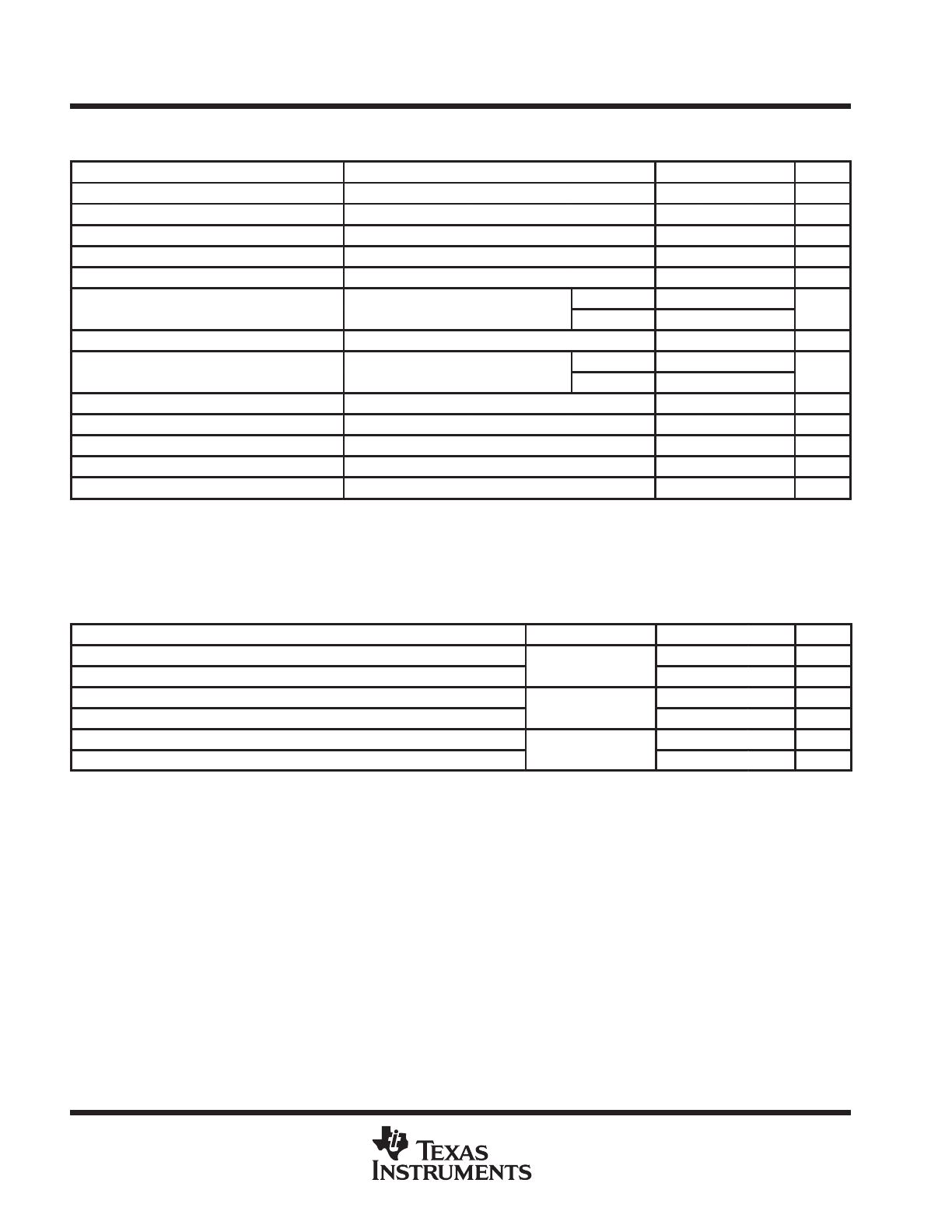
SN65175, SN75175
QUADRUPLE DIFFERENTIAL LINE RECEIVERS
SLLS145B – OCTOBER 1990 – REVISED MAY 1995
4
POST OFFICE BOX 655303
•
DALLAS, TEXAS 75265
electrical characteristics over recommended ranges of common-mode input voltage, supply
voltage and operating free-air temperature
PARAMETER
TEST CONDITIONS
MIN
TYP†
MAX
UNIT
VIT+
Positive-going input threshold voltage
VO = 2.7 V,
IO = – 0.4 mA
0.2
V
VIT–
Negative-going input threshold voltage
VO = 0.5 V,
IO = 16 mA
– 0.2‡
V
Vhys
Hysteresis voltage (VIT+ – VIT–)
See Figure 4
50
mV
VIK
Enable-input clamp voltage
II = – 18 mA
– 1.5
V
VOH
High-level output voltage
VID = 200 mV,
IOH = – 400
µ
A,
See Figure 1
2.7
V
VOL
Low level output voltage
VID = 200 mV
See Figure 1
IOL = 8 mA
0.45
V
VOL
Low-level output voltage
VID = – 200 mV,
See Figure 1
IOL = 16 mA
0.5
V
IOZ
High-impedance-state output current
VO = 0.4 V to 2.4 V
±
20
µ
A
II
Line input current
Other input at 0 V
See Note 3
VI = 12 V
1
mA
II
Line input current
Other input at 0 V,
See Note 3
VI = – 7 V
– 0.8
mA
IIH
High-level enable-input current
VIH = 2.7 V
20
µ
A
IIL
Low-level enable-input current
VIL = 0.4 V
– 100
µ
A
ri
Input resistance
12
k
Ω
IOS
Short-circuit output current§
– 15
– 85
mA
ICC
Supply current
Outputs disabled
70
mA
† All typical values are at VCC = 5 V, TA = 25
°
C.
‡ The algebraic convention, in which the less positive (more negative) limit is designated as minimum, is used in this data sheet for threshold voltage
levels only.
§ Not more than one output should be shorted at a time, and the duration of the short circuit should not exceed one second.
NOTE 3: Refer to ANSI Standards EIA/TIA-422-B, RS-423-B, and RS-485 for exact conditions.
switching characteristics, V
CC
= 5 V, C
L
= 15 pF, T
A
= 25
°
C
PARAMETER
TEST CONDITIONS
MIN
TYP
MAX
UNIT
tPLH
Propagation delay time, low- to high-level output
See Figure 2
22
35
ns
tPHL
Propagation delay time, high- to low-level output
See Figure 2
25
35
ns
tPZH
Output enable time to high level
See Figure 3
13
30
ns
tPZL
Output enable time to low level
See Figure 3
19
30
ns
tPHZ
Output disable time from high level
See Figure 3
26
35
ns
tPLZ
Output disable time from low level
See Figure 3
25
35
ns
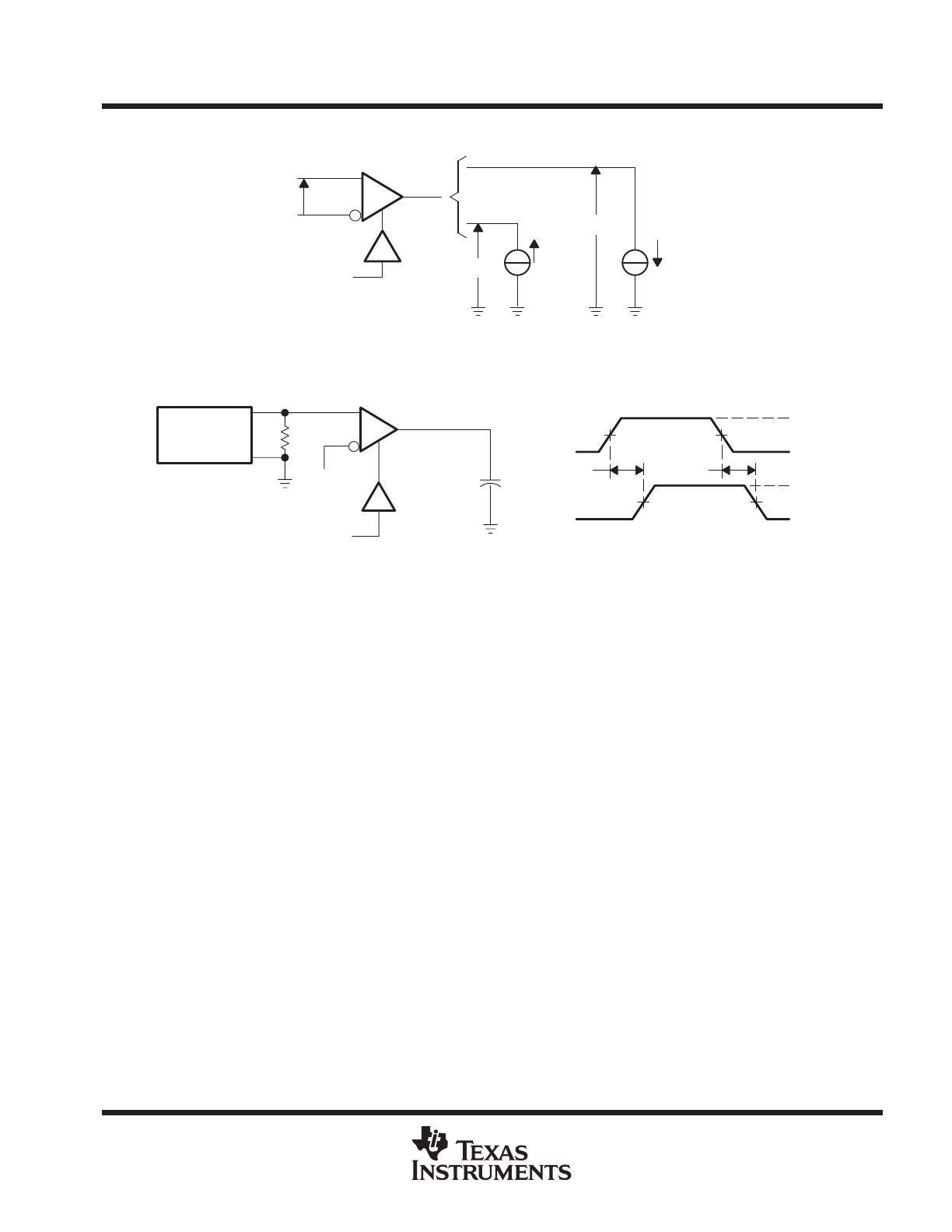
SN65175, SN75175
QUADRUPLE DIFFERENTIAL LINE RECEIVERS
SLLS145B – OCTOBER 1990 – REVISED MAY 1995
5
POST OFFICE BOX 655303
•
DALLAS, TEXAS 75265
PARAMETER MEASUREMENT INFORMATION
VOH
(–)
IOH
(+)
IOL
2 V
VID
VOL
S
Figure 1. V
OH
, V
OL
VOL
VOH
0 V
3 V
Output
Input
tPHL
tPLH
1.3 V
1.3 V
1.5 V
CL = 15 pF
(see Note B)
1.5 V
2 V
TEST CIRCUIT
VOLTAGE WAVEFORMS
50
Ω
Output
Generator
(see Note A)
1.5 V
NOTES: A. The input pulse is supplied by a generator having the following characteristics: PRR
≤
1 MHz, duty cycle = 50%, tr
≤
6 ns, tf
≤
6 ns, ZO = 50
Ω.
B. CL includes probe and stray capacitance.
Figure 2. Test Circuit and Voltage Waveforms
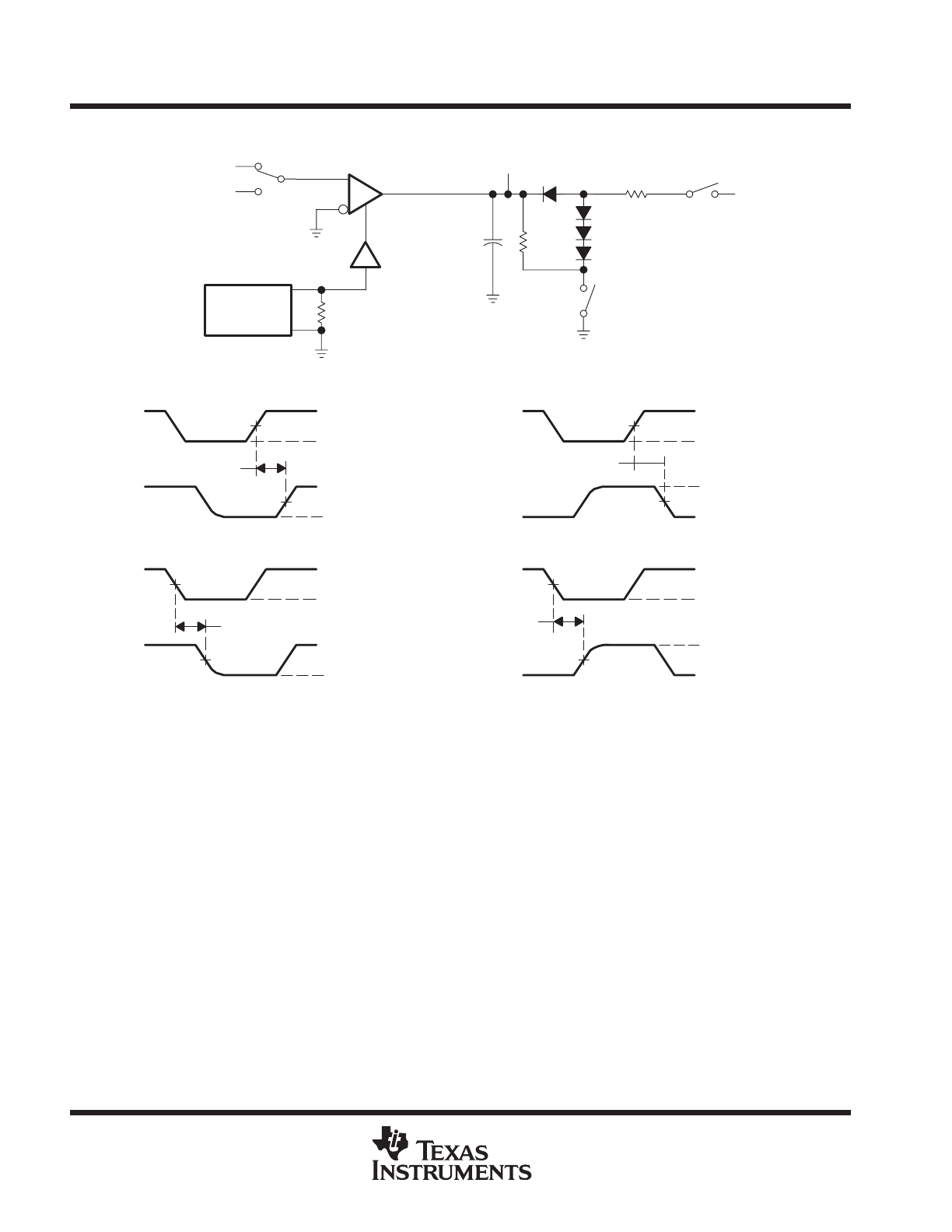
SN65175, SN75175
QUADRUPLE DIFFERENTIAL LINE RECEIVERS
SLLS145B – OCTOBER 1990 – REVISED MAY 1995
6
POST OFFICE BOX 655303
•
DALLAS, TEXAS 75265
PARAMETER MEASUREMENT INFORMATION
1.5 V
VOLTAGE WAVEFORMS
TEST CIRCUIT
tPLZ
tPZL
1.4 V
tPHZ
SW2 Closed
tPHZ
Output
Input
1.5 V
0 V
VOH
3 V
SW1 to 1.5 V
SW3 Closed
SW3 Closed
SW2 Open
SW1 to 1.5 V
tPZH
3 V
tPZH
0 V
VOH
0 V
1.5 V
1.5 V
Input
Output
Output
Input
3 V
3 V
SW3 Closed
3 V
1.4 V
0 V
VOL
tPLZ
SW1 to –1.5 V
SW2 Closed
1.5 V
4.5 V
SW3 Open
SW2 Closed
SW1 to –1.5 V
tPZL
1.5 V
5 V
SW2
See Note C
SW3
5 k
Ω
51
Ω
SW1
–1.5 V
1.5 V
VOL
0 V
Output
Input
CL
(see Note B)
Output
2 k
Ω
0.5 V
0.5 V
Generator
(see Note A)
NOTES: A. The input pulse is supplied by a generator having the following characteristics: PRR
≤
1 MHz, duty cycle = 50%, tf
≤
6 ns,
tr
≤
6 ns, ZO = 50
Ω
.
B. CL includes probe and stray capacitance.
C. All diodes are 1N916 or equivalent.
Figure 3. Test Circuit and Voltage Waveforms
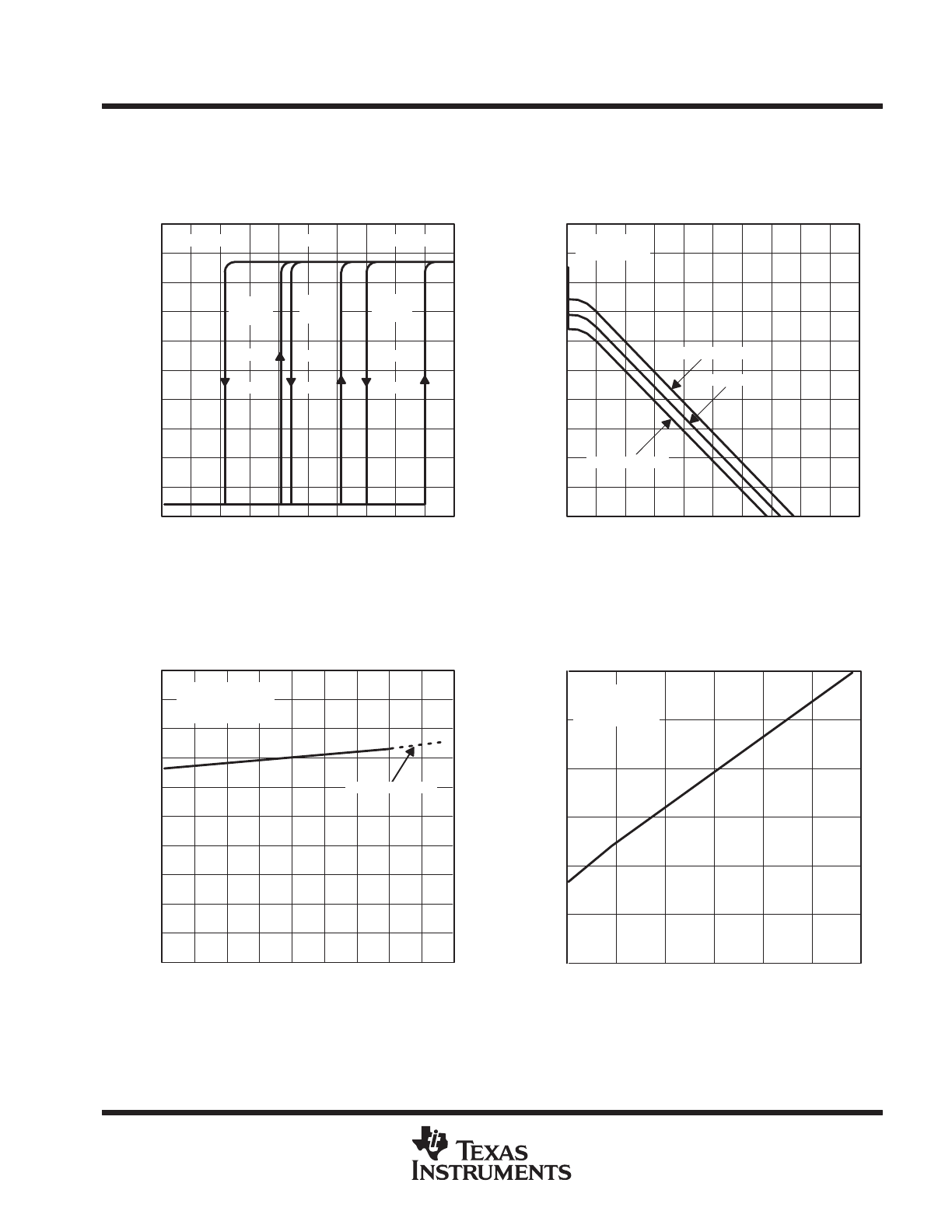
SN65175, SN75175
QUADRUPLE DIFFERENTIAL LINE RECEIVERS
SLLS145B – OCTOBER 1990 – REVISED MAY 1995
7
POST OFFICE BOX 655303
•
DALLAS, TEXAS 75265
TYPICAL CHARACTERISTICS
Figure 4
2.5
2
1
0.5
0
4.5
1.5
–125 –100 –75 – 50 – 25
0
25
3.5
3
4
OUTPUT VOLTAGE
vs
DIFFERENTIAL INPUT VOLTAGE
5
50
75
100 125
VID – Differential Input Voltage – mV
– Output V
oltage – V
V
O
VCC = 5 V
IO = 0
TA = 25
°
C
VIT–
VIT+
VIC =
–12 V
VIC =
0
VIC =
12 V
VIT–
VIT+
VIT–
VIT+
Figure 5
2.5
2
1
0.5
0
4.5
1.5
0
– 5 –10 –15 – 20 – 25 – 30
– High-Level Output V
oltage – V
3.5
3
4
5
– 35 – 40 – 45 – 50
HIGH-LEVEL OUTPUT VOLTAGE
vs
HIGH-LEVEL OUTPUT CURRENT
IOH – High-Level Output Current – mA
V
OH
VID = 0.2 V
TA = 25
°
C
VCC = 5 V
VCC = 5.25 V
VCC = 4.75 V
Figure 6
2.5
2
1
0.5
0
4.5
1.5
0
10
20
30
40
50
60
3.5
3
4
HIGH-LEVEL OUTPUT VOLTAGE
vs
FREE-AIR TEMPERATURE
5
70
80
90
– High-Level Output V
oltage – V
V
OH
TA – Free-Air Temperature –
°
C
VCC = 5 V
VID = 0.2 V
IOH = – 400
µ
A
SN65175 Only
Figure 7
LOW-LEVEL OUTPUT VOLTAGE
vs
LOW-LEVEL OUTPUT CURRENT
0.3
0.2
0.1
0
0
5
10
0.4
0.5
0.6
15
20
25
30
– Low-Level Output V
oltage – V
V
OL
IOL – Low-Level Output Current – mA
VCC = 5 V
TA = 25
°
C
VID = – 0.2 V
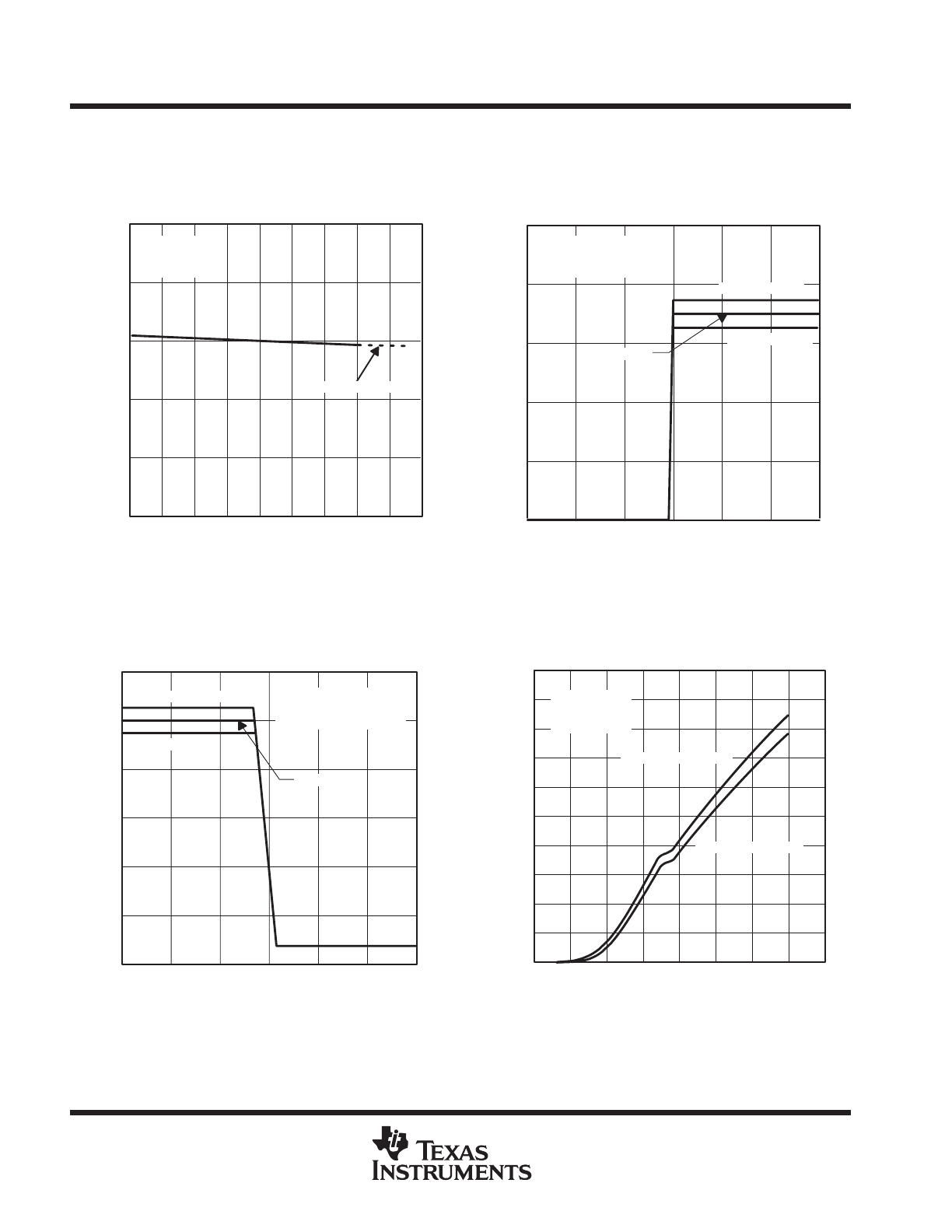
SN65175, SN75175
QUADRUPLE DIFFERENTIAL LINE RECEIVERS
SLLS145B – OCTOBER 1990 – REVISED MAY 1995
8
POST OFFICE BOX 655303
•
DALLAS, TEXAS 75265
TYPICAL CHARACTERISTICS
Figure 8
0.2
0.1
0
0
10
20
30
40
50
60
0.3
0.4
LOW-LEVEL OUTPUT VOLTAGE
vs
FREE-AIR TEMPERATURE
0.5
70
80
90
– Low-Level Output V
oltage – V
V
OL
TA – Free-Air Temperature –
°
C
VCC = 5 V
VID = – 0.2 V
IOL = 8 mA
SN65175 Only
Figure 9
2
1
0
0
0.5
1
1.5
– Output V
oltage – V
3
4
OUTPUT VOLTAGE
vs
ENABLE G VOLTAGE
5
2
2.5
3
VCC = 5.25 V
VCC = 5 V
VCC = 4.75 V
VID = 0.2 V
Load = 8 k
Ω
to GND
TA = 25
°
C
Enable G Voltage – V
V
O
Figure 10
3
2
1
0
0
0.5
1
4
5
OUTPUT VOLTAGE
vs
ENABLE G VOLTAGE
6
1.5
2
2.5
3
VID = –0.2 V
Load = 1 k
Ω
to VCC
TA = 25
°
C
VCC = 5.25 V
VCC = 5 V
VCC = 4.75 V
Enable G Voltage – V
– Output V
oltage – V
V
O
Figure 11
40
30
10
0
0
1
2
3
4
5
6
– Supply Current – mA
50
70
SUPPLY CURRENT (ALL RECEIVERS)
vs
SUPPLY VOLTAGE
80
7
8
20
60
No Load
Inputs Open
TA = 25
°
C
I CC
VCC – Supply Voltage – V
Outputs Disabled
Outputs Enabled
90
100
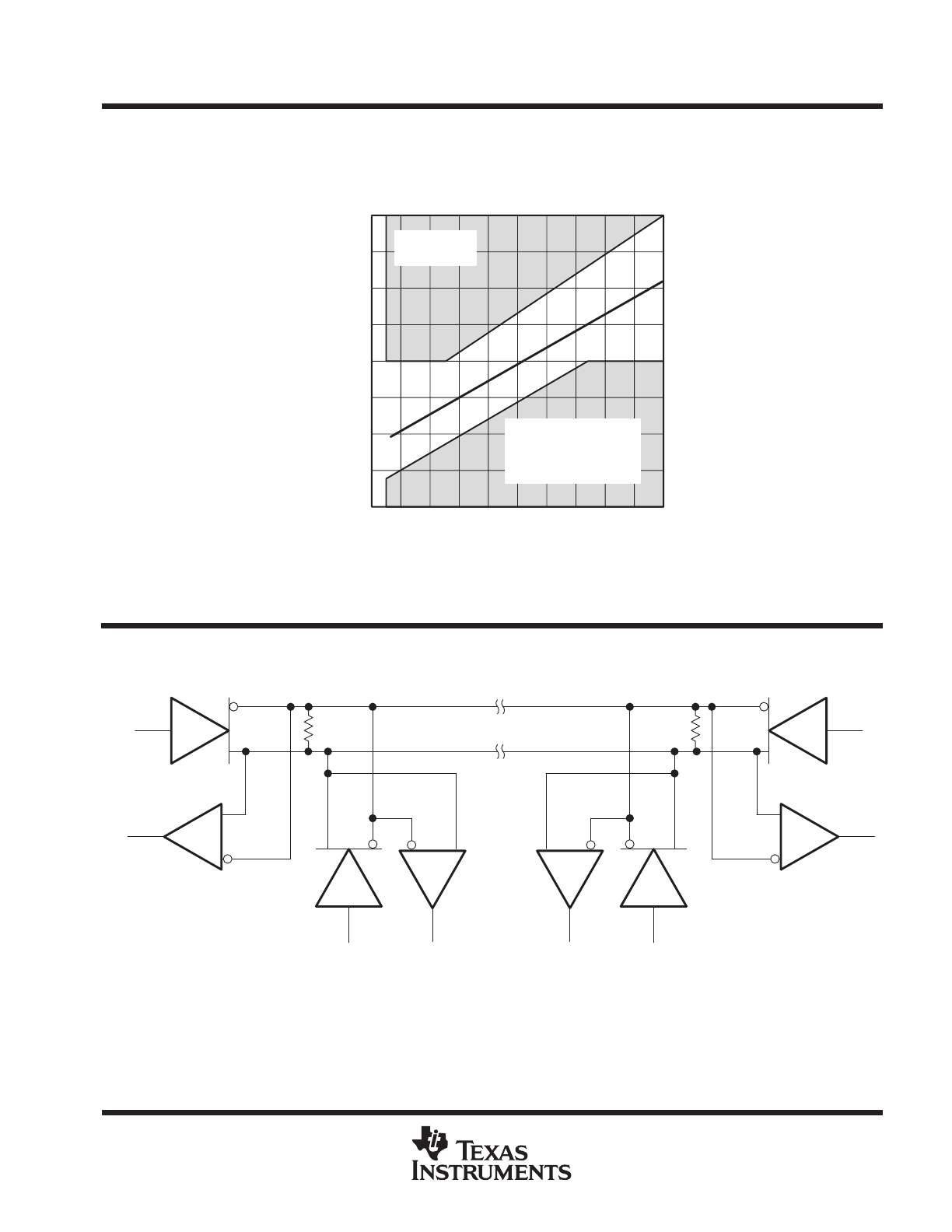
SN65175, SN75175
QUADRUPLE DIFFERENTIAL LINE RECEIVERS
SLLS145B – OCTOBER 1990 – REVISED MAY 1995
9
POST OFFICE BOX 655303
•
DALLAS, TEXAS 75265
TYPICAL CHARACTERISTICS
0
– 0.25
– 0.75
–1
– 8
– 6 – 4
0
2
4
6
– Input Current – mA
0.25
0.75
INPUT CURRENT
vs
INPUT VOLTAGE
1
10
8
– 0.5
0.5
I I
VI – Input Voltage – V
VCC = 5 V
TA = 25
°
C
The Unshaded Area
Conforms to
Figure 3.2 of
EIA RS-485
– 2
12
Figure 12
APPLICATION INFORMATION
1/4 SN75172
1/4 SN75173
1/4 SN75172
1/4 SN75173
1/4 SN75174
1/4 SN75173
1/4 SN75175
1/4 SN75174
Up to 32
Driver/Receiver
Pairs
RT
RT
NOTE A: The line should be terminated at both ends in its characteristicc impedance (RT = ZO). Stub lengths off the main line should be kept
as short as possible.
Figure 13. Typical Application Circuit

IMPORTANT NOTICE
Texas Instruments and its subsidiaries (TI) reserve the right to make changes to their products or to discontinue
any product or service without notice, and advise customers to obtain the latest version of relevant information
to verify, before placing orders, that information being relied on is current and complete. All products are sold
subject to the terms and conditions of sale supplied at the time of order acknowledgement, including those
pertaining to warranty, patent infringement, and limitation of liability.
TI warrants performance of its semiconductor products to the specifications applicable at the time of sale in
accordance with TI’s standard warranty. Testing and other quality control techniques are utilized to the extent
TI deems necessary to support this warranty. Specific testing of all parameters of each device is not necessarily
performed, except those mandated by government requirements.
CERTAIN APPLICATIONS USING SEMICONDUCTOR PRODUCTS MAY INVOLVE POTENTIAL RISKS OF
DEATH, PERSONAL INJURY, OR SEVERE PROPERTY OR ENVIRONMENTAL DAMAGE (“CRITICAL
APPLICATIONS”). TI SEMICONDUCTOR PRODUCTS ARE NOT DESIGNED, AUTHORIZED, OR
WARRANTED TO BE SUITABLE FOR USE IN LIFE-SUPPORT DEVICES OR SYSTEMS OR OTHER
CRITICAL APPLICATIONS. INCLUSION OF TI PRODUCTS IN SUCH APPLICATIONS IS UNDERSTOOD TO
BE FULLY AT THE CUSTOMER’S RISK.
In order to minimize risks associated with the customer’s applications, adequate design and operating
safeguards must be provided by the customer to minimize inherent or procedural hazards.
TI assumes no liability for applications assistance or customer product design. TI does not warrant or represent
that any license, either express or implied, is granted under any patent right, copyright, mask work right, or other
intellectual property right of TI covering or relating to any combination, machine, or process in which such
semiconductor products or services might be or are used. TI’s publication of information regarding any third
party’s products or services does not constitute TI’s approval, warranty or endorsement thereof.
Copyright
1998, Texas Instruments Incorporated
